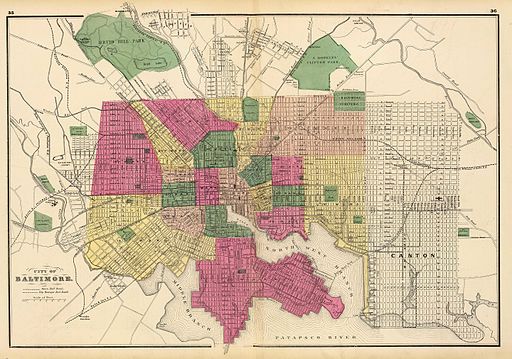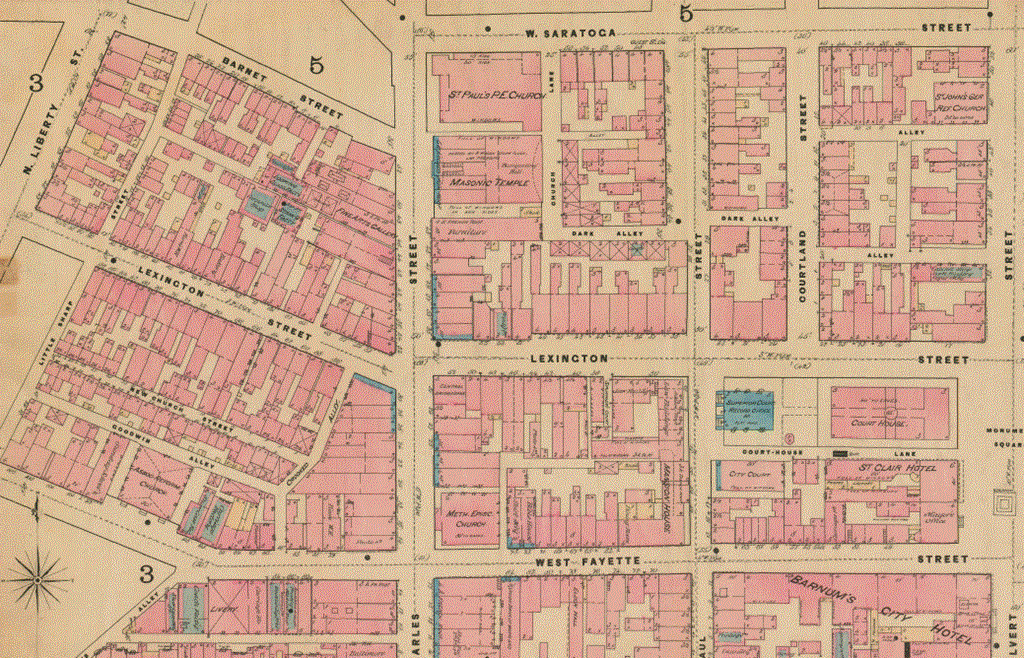Baltimore Neighborhoods Research Guide

Defining a Neighborhood
We usually think the boundaries of our neighborhood enclose the few square blocks surrounding our home, church, school, business, park or playground. However, agencies collect, study, and disseminate Baltimore City data define neighborhoods quite differently. Geographic and social criteria provide useful information for understanding neighborhood dynamics of small areas of the city.
Using Demographics
Baltimore Neighborhood Profiles: One commonly-used method for understanding a neighborhood is to review the characteristics of the people who live there, such as age, race, gender, and other social and economic factors, and then create a demographic profile of the area. Data from the 2010 Census are now available from the Baltimore City Planning Department.
Census tracts: The United States Census Bureau uses semi-permanent boundaries to maintain accurate statistics. Census tracts may not fit neatly into your neighborhood's boundaries. The Baltimore City Planning Department has an interactive map of neighborhood statistical areas with census tracts. Use the American Factfinder from the U.S. Census Bureau or the Maryland State Data Center website to find information on the one or more census tracts that may comprise your neighborhood.
Community Statistical Areas (CSAs): Most neighborhoods in Baltimore City have different borders than those established in census tracts. So, clusters of neighborhoods were combined along census tract boundaries, forming 55 CSAs. The Baltimore Neighborhood Indicators Alliance's Vital Signs report provides detailed demographic profiles of each CSA in Baltimore City.
Regional Planning Districts (RPDs): First developed in the 1970s, RPDs follow census geography boundaries and contain one or more census tracts. They are larger than most neighborhoods, but provide more to analyze. Find data covering RPD demographics, transportation, and environmental issues at the Regional Information Center, a library operated in partnership between the Baltimore Metropolitan Council and the Enoch Pratt Free Library.
Zip Codes: The U.S. Census also makes demographic data available by zip code at their American FactFinder page.
Using Numerical Statistics
Crime Statistics
- SpotCrime: provides a crime map of Baltimore City and daily statistics by street.
- Baltimore Homicides: an interactive map provided by the Baltimore Sun, that is searchable geographically by police district and zip code.
Health Statistics
Economic Statistics
- Live Baltimore: provides home sales statistics about Baltimore City neighborhoods and information
about new neighborhood developments.
- Vital Signs:
BNIA's report for home sales data, neighborhood affordability
information, and statistics concerning vacant/abandoned properties and
reinvestment activity.
- Economic characteristics are available at American FactFinder: Find information by zip code or census tract, concerning housing, income, and poverty status.
Plans for the Future
- Neighborhood Plans: Master Plans and Urban Renewal Plans for the futures of many Baltimore neighborhoods, prepared by the Baltimore City Planning Department.
Using Maps
Discovering the History of a Neighborhood
The Pratt Library's Maryland Department is a great place to visit for neighborhood history research.
- Neighborhood History Books
To find published Baltimore neighborhood histories, search for the name of your neighborhood in the Pratt Library catalog.
- Vertical Files
File folders containing news clippings, pamphlets, brochures, etc. full of interesting information about city neighborhoods.
- Historic Maps

- Sanborn Fire Insurance Maps: show the locations and construction information of all buildings and houses on each street in Baltimore City between 1890 and 1984.
- Sachse Map of Baltimore City: a detailed map that provides a unique portrait of Baltimore City, its businesses, houses, institutions, and landscapes, as they appeared in 1869.
- Aerial Photographic Map of Baltimore and Metropolitan District of Baltimore County: photographed by the Chesapeake Aircraft Company between October, 1926, and February, 1927. Also available in hard copy in the Maryland Department.
- Baltimore City Census District Maps: show changes in census districts over time. Available in hard copy in the Maryland Department.
- Photographs
Many of the mounted black & white photographs (mainly dating from the 1930s to the 1950s) in the Maryland Department collection show Baltimore streets, street corners, and notable buildings. They are often used for neighborhood history research.
Who Can I Contact for Assistance with a Neighborhood-Related Issue?
- Baltimore City Council District
Find your council district, council representative and polling place.
- Neighborhood Liaisons from the Mayor's Office of Neighborhoods
These are the Mayor's official representatives to local communities.
- Baltimore City's Online Community Association Directory
Find a local group that advocates for your neighborhood.
- Baltimore Main Streets
Provides customized support and public resources to designated neighborhood business districts.
- Baltimore Neighborhoods, Inc.
Working for justice in housing through compliance with fair housing and tenant-landlord laws.
- Baltimore City Community Action Partnership
Operates five Community Action Centers throughout Baltimore, offering services such as employment assistance, energy assistance, emergency food and housing referrals, voter education, and GED information.
- Office of Home Energy Programs
Provides subsidies to help low-income residents with their heating and cooling bills.
- Baltimore Housing ⁄ Housing Code Enforcement
Helps to maintain safe and attractive neighborhoods through enforcement of the city's housing, zoning, building and related codes.
- Baltimore Housing ⁄ Community Development Block Grant Program
Works on the local level to develop strong neighborhoods, provide decent and affordable housing for low-to-moderate income families, and expand economic opportunity.
- Baltimore City Police in Your Community
Select your neighborhood to see which police district serves your area, or contact your community's patrol district.
- Baltimore City Neighborhood Fire Stations
Highlights details about the 38 fire stations in Baltimore and the communities they serve.
Getting Involved in my Neighborhood
Ask Us
If you would like to know more, email us through our Ask-A-Librarian service or contact us at:
Maryland Department
Enoch Pratt Free Library
Central Library, State Library Resource Center
400 Cathedral Street
Baltimore, MD 21201
(410) 396-5468